
How to work with tuples in TypeScript
In TypeScript, tuples are a data type that allows you to express an array with a fixed number of ele...
Read More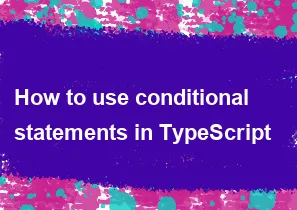
How to use conditional statements in TypeScript
In TypeScript, you can use conditional statements such as if, else if, and else to control the flow...
Read More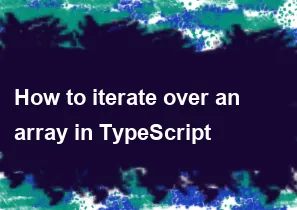
How to iterate over an array in TypeScript
In TypeScript, you can iterate over an array using various methods. Here are a few examples:For Loop...
Read More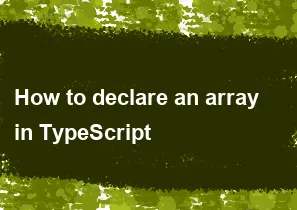
How to declare an array in TypeScript
In TypeScript, you can declare an array using the following syntax:typescriptCopy code// Explicitly...
Read More
How to use classes in TypeScript
In TypeScript, classes are used to create objects with properties and methods. Here's a basic overvi...
Read More
How to configure TypeScript compiler options
Configuring TypeScript compiler options involves creating a tsconfig.json file in your project direc...
Read More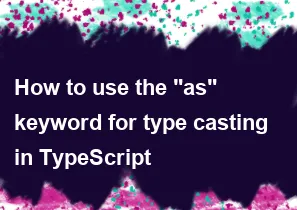
How to use the "as" keyword for type casting in TypeScript
In TypeScript, the as keyword is used for type casting or type assertions. It allows you to explicit...
Read More
How to work with intersection types in TypeScript
Intersection types in TypeScript allow you to combine multiple types into one. This is useful when y...
Read More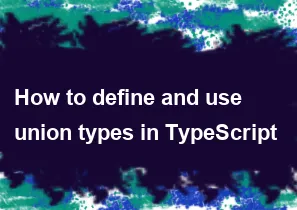
How to define and use union types in TypeScript
In TypeScript, union types allow you to specify that a variable or parameter can have multiple types...
Read More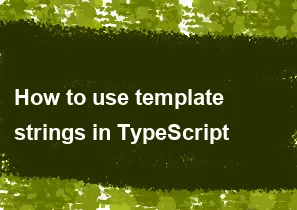
How to use template strings in TypeScript
In TypeScript, template strings, also known as template literals, are a way to work with string inte...
Read More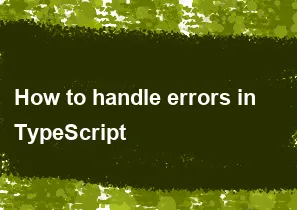
How to handle errors in TypeScript
Handling errors in TypeScript is crucial for writing robust and reliable applications. TypeScript pr...
Read More
How to implement generics in TypeScript
Generics in TypeScript allow you to write functions and classes that work with different data types...
Read More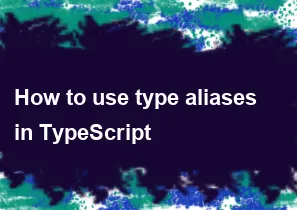
How to use type aliases in TypeScript
In TypeScript, type aliases allow you to create a new name for a type. This can be useful to make yo...
Read More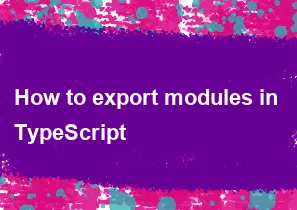
How to export modules in TypeScript
In TypeScript, you can export modules using the export keyword. There are several ways to export mod...
Read More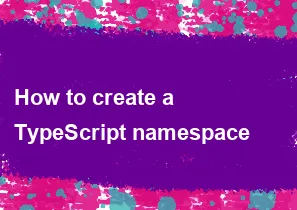
How to create a TypeScript namespace
In TypeScript, namespaces are used to organize code and prevent naming conflicts. They are similar t...
Read More
How to use rest parameters in TypeScript functions
In TypeScript, you can use rest parameters in functions to represent an indefinite number of argumen...
Read More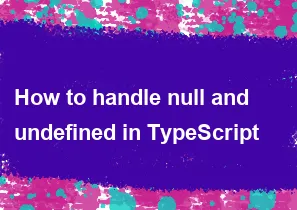
How to handle null and undefined in TypeScript
In TypeScript, handling null and undefined involves using type annotations and possibly additional c...
Read More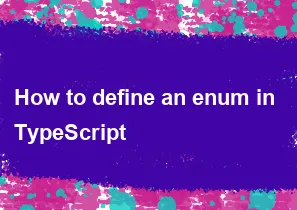
How to define an enum in TypeScript
In TypeScript, you can define an enum using the enum keyword. Enums allow you to define a set of nam...
Read More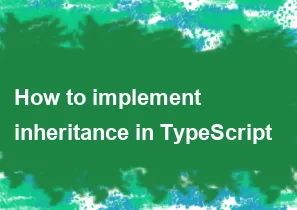
How to implement inheritance in TypeScript
In TypeScript, you can implement inheritance using the extends keyword. Here's a basic example to de...
Read More
How to create an interface in TypeScript
In TypeScript, you can create interfaces to define the structure or shape of objects. Interfaces hel...
Read More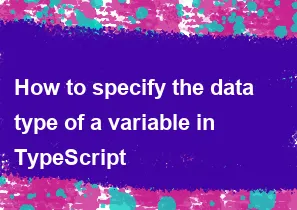
How to specify the data type of a variable in TypeScript
In TypeScript, you can specify the data type of a variable using type annotations. TypeScript is a s...
Read More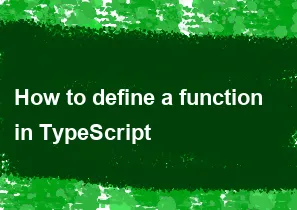
How to define a function in TypeScript
In TypeScript, you can define a function using the function keyword, similar to JavaScript. TypeScri...
Read More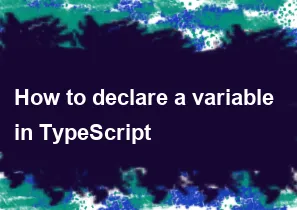
How to declare a variable in TypeScript
In TypeScript, you can declare a variable using the let, const, or var keyword, followed by the vari...
Read More-
Popular Post
- How to optimize for Google's About This Result feature for local businesses
- How to implement multi-language support in an Express.js application
- How to handle and optimize for changes in mobile search behavior
- How to handle CORS in a Node.js application
- How to use Vue.js with a UI framework (e.g., Vuetify, Element UI)
- How to configure Laravel Telescope for monitoring and profiling API requests
- How to create a command-line tool using the Commander.js library in Node.js
- How to implement code splitting in a React.js application
- How to use the AWS SDK for Node.js to interact with various AWS services
- How to use the Node.js Stream API for efficient data processing
- How to implement a cookie parser middleware in Node.js
- How to implement WebSockets for real-time communication in React
-
Latest Post
- How to implement a dynamic form with dynamic field styling based on user input in Next.js
- How to create a custom hook for handling user interactions with the browser's device motion in Next.js
- How to create a custom hook for handling user interactions with the browser's battery status in Next.js
- How to implement a dynamic form with dynamic field visibility based on user input in Next.js
- How to implement a dynamic form with real-time collaboration features in Next.js
- How to create a custom hook for handling user interactions with the browser's media devices in Next.js
- How to use the useSWRInfinite hook for paginating data with a custom loading indicator in Next.js
- How to create a custom hook for handling user interactions with the browser's network status in Next.js
- How to create a custom hook for handling user interactions with the browser's location in Next.js
- How to implement a dynamic form with multi-language support in Next.js
- How to create a custom hook for handling user interactions with the browser's ambient light sensor in Next.js
- How to use the useHover hook for creating interactive image zoom effects in Next.js